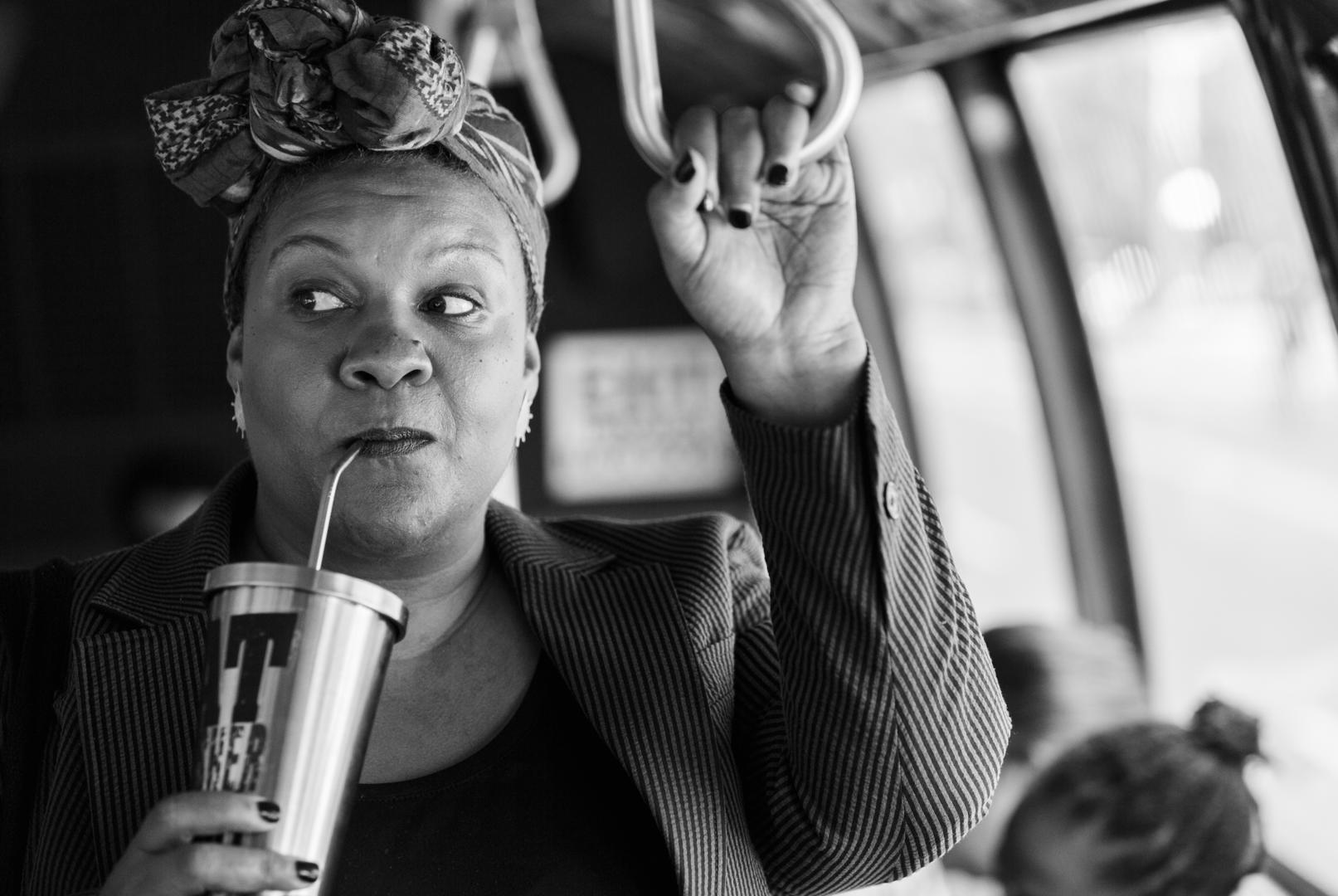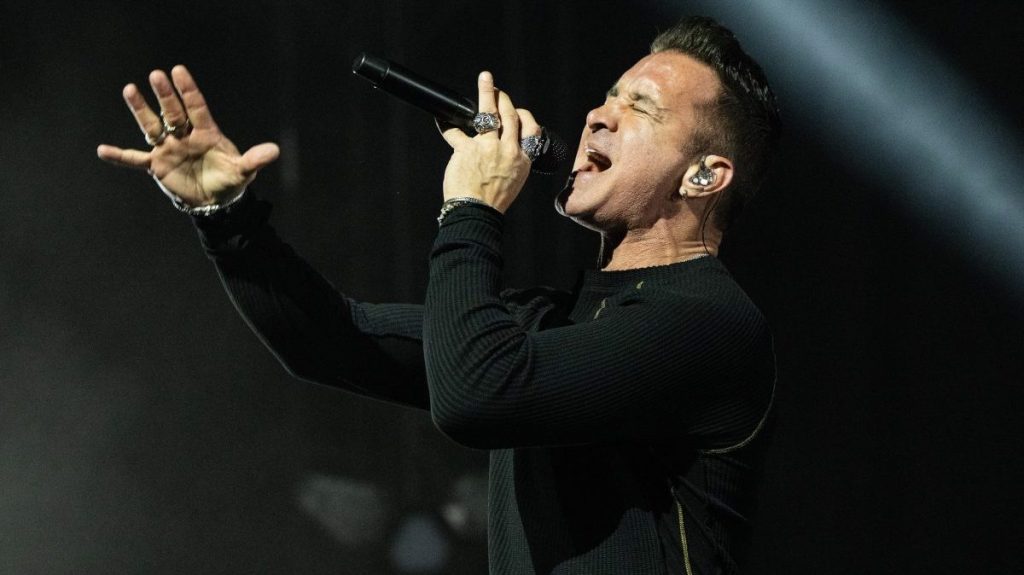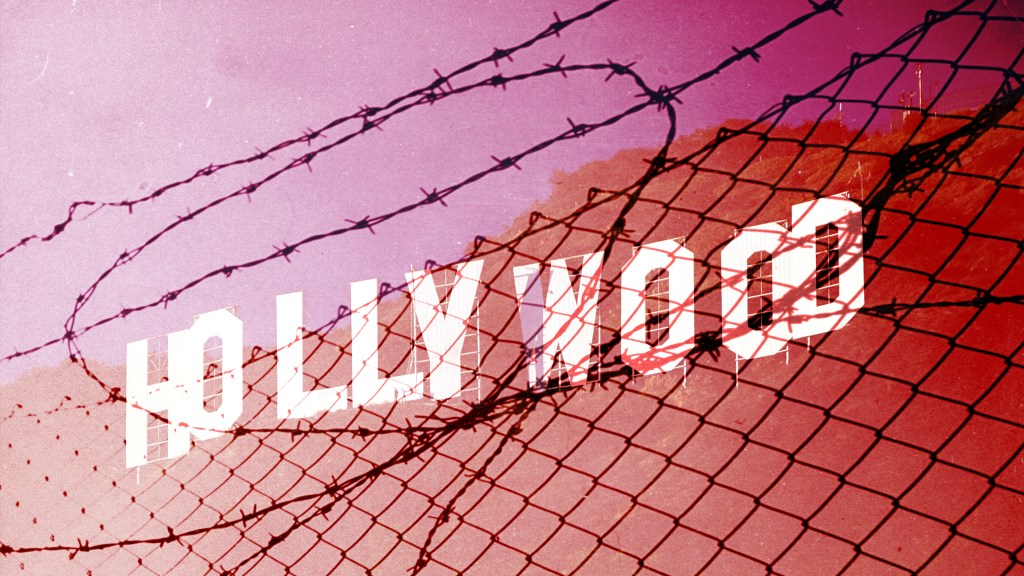On February 1, Radha Blank became the second Black woman to ever win the Sundance Film Festival’s prestigious U.S. Dramatic Directing award.
Blank’s debut film, The 40-Year-Old Version, which she also wrote, co-produced, and stars in, was a certified triumph. The semi-autobiographical story of a Black woman in her 40s who reclaims her voice by becoming a rapper won over festival critics and marked the chance for Blank to, as she’s said, finally “see someone who looks like me in the center of a classic New York film.”
Videos by VICE
As the festival came to a close, Netflix quickly snapped the film up in a deal reportedly ranging from the “mid-to-high seven figures.”
“I’m ready—in the way that the Safdie Brothers and Greta Gerwig are being seen as auteurs and filmmakers—I’m ready to step out and tell my own stories,” Blank told VICE. “Hopefully, people see now that they can trust me.”
At a Sundance that featured a lineup with 46 percent of films directed by women, women also won all four of the jury’s 2020 directing awards (three of which went to Black women). But outside of the Sundance bubble in Park City, Utah, the landscape for women filmmakers is a starkly different place.
A report by the USC Annenberg Inclusion Initiative found that in 2019, women directed just 10.6 percent of the top 100 movies, the highest percentage in the last decade. While any increase is a milestone, it’s a number that’s still woefully low. And the stats for women directors of color are even more dire.
“Women of color received the highest median and average Metacritic scores for their films compared to white male-, underrepresented male-, and white female-directed content,” Dr. Stacy L. Smith, the initiative’s founder, told Deadline. “Yet, women of color are least likely to work as directors across the top 100 films each year. These findings suggest that when companies seek to hire ‘the best person for the job,’ they are not relying on objective criteria, but on a subjective view of storytellers.”
In other words, Blank is stepping into a Hollywood system that is notoriously hostile to women, especially women of color.
To better understand the state of the industry, VICE spoke to five women directors, all who had films at Sundance 2020, about the setbacks, victories, and intrinsic sexism and racism that accompany working within a patriarchal film industry.
Taking control
Actress Romola Garai was just 18 years old when Harvey Weinstein summoned her to his London hotel room for an “audition” and opened the door in a bathrobe. “I felt violated by it,” she told The Guardian in the wake of the #MeToo movement. “It has stayed very clearly in my memory.” Soon after, on the set of 2004’s Dirty Dancing: Havana Nights, Garai experienced “a cesspit of horrific misogyny” and severe body shaming that, she said,”screwed me up for years.”
But the now-37-year-old came to Sundance this year fully in control. As a first-time feature director and writer of the feminist horror film Amulet, Garai encountered a power surge she’d never experienced while acting.
“It’s very hard to have any sort of real control over your career when you’re an actress. Everything about your career is defined by beauty, which is defined by the patriarchy,” she told VICE. “Your life is completely dictated by that. So, yes, I was definitely trying to get a greater sense of control over my life.”
For Saudi Arabian director Haifaa Al Mansour, her mere presence in the industry is revolutionary. She grew up in an era when movie theaters were banned throughout the Kingdom, and she wasn’t allowed to enter her town’s single video store because she was a woman. Standing outside, she’d request her preferred Disney or Jackie Chan VHS that a male clerk would then deliver into her waiting arms.
Now widely regarded as Saudi Arabia’s “first female director” and its most “controversial” one by mere virtue of her gender, the woman behind Wadjda, Mary Shelley, and 2020’s The Perfect Candidate has found that even in Hollywood—although on a “different level” from the misogyny she experienced in her home country—her right to be in the room is still up for discussion.
“I think there is a crack in the system now and people are very conscious and re-examining what is women’s role in the industry.” Al Mansour, 45, said. “But you still have to prove that you are capable of leading. People will always question, ‘Can she do it?’ Men are usually given the benefit of the doubt.”
Snubbed by the Oscars
That benefit of the doubt extends to the industry’s top awards. “The whole Hollywood system can sometimes feel like a bit of a boys’ club,” Taika Waititi, the male director of best picture Oscar nominee and best adapted screenplay winner Jojo Rabbit, told Reuters.
It’s a vast understatement.
Sunday night’s Oscars worked overtime to try to convince viewers they support women. From trotting out Brie Larson, Sigourney Weaver, and Gal Gadot to say that “all women are superheroes” to the presence of a woman conductor in the orchestra pit (but only for a single number, of course, not the whole show), it was a band-aid on a bullet hole.
While Bong Joon Ho and Parasite‘s historic, deserving wins signaled an Oscars that seeks to become something more and better, women directors once again watched from the sidelines as they and their films were largely ignored.
“My first time at the Oscars couldn’t have been more beautiful,” Honey Boy director Alma Har’el tweeted with a photo of presenter Natalie Portman, who wore a cape embroidered with the names of women directors (including Har’el’s) snubbed by the Academy.
This year, critically and commercially successful directors like Har’el, Lulu Wang ( The Farewell), Lorene Scafaria ( Hustlers), Melina Matsoukas ( Queen & Slim), Marielle Heller ( A Beautiful Day in the Neighborhood), and Greta Gerwig ( Little Women) were all overlooked in the Oscars’ directing category, the five slots going instead, and as per usual, to men. For best picture, only Gerwig’s work managed to break in as one of the nine nominees. Only one woman, Kathryn Bigelow, has ever won an Oscar for directing in the Academy’s 92-year history.
It’s easy to say the Oscars are out of touch and don’t matter. Except, unfortunately, they do. Having an “Oscar-nominated” or “Oscar-winning” adjective attached to one’s name immediately adds value in a cutthroat market. It can give a director the collateral they need to get their off-the-wall passion project made, secure funding and talent, or be entrusted with a big-budget studio blockbuster. And when women are overlooked at even the nominee level, it’s another setback they have to work exponentially harder to overcome.
In what many considered a 2020 Oscars bright spot, four out of this year’s five nominated feature documentaries were directed or co-directed by a woman. Though it’s a category traditionally seen as more welcoming to women filmmakers than the narrative (i.e. best picture) space, two-time Oscar-nominated documentary filmmaker Liz Garbus cautioned against looking at representation there as a job well done.
“It’s quite a cynical thing to be celebrating. People were tweeting, ‘Oh, but look how well represented women are in the documentary category,’” said Garbus, who premiered her first narrative film, Lost Girls (Netflix, March 13), at Sundance. “That’s not because women are inherently better documentary filmmakers than men. It’s about opportunity.”
Documentaries are lower budget, she explained, so it’s more likely the powers-that-be will entrust a woman director with a documentary than a narrative feature. “The documentary representation of women shows that when women are equally represented and given the same budgets as men, they shine,” she said. “That’s just not happening in the higher budget [feature films], and it is purely a remnant of patriarchal culture.”
Additionally, the scramble to diversify the Oscars’ voting body following 2015’s #OscarsSoWhite movement to include more people of color, women, and younger voters, hasn’t been as drastic as many on the outside assumed.
As The Hollywood Reporter pointed out, “the organization began from a place of such whiteness (92 percent in 2015) and maleness (75 percent)” that the changes it’s made since are still far behind representing the American population. “Its new classes have been 46 percent female and 31 percent people of color, while the U.S. is 50.5 percent female and 39.6 percent people of color.”
“We have to cultivate the love where it exists, as opposed to constantly trying to knock on a door when someone’s not answering you,” Blank said. “We should challenge them, call them out, let them know that this is not as valid as it should be. And then if we’re not seeing any changes there, move on to another version of success.”
Blank did it her way
Blank’s seemingly overnight success story at Sundance is actually far from it. After working for years as a playwright and writer for hire, it took her six years to get The 40-Year-Old Version made, and she had to fight to shoot the movie in black-and-white and cast herself, rather than a known name like Tiffany Haddish, as the lead. Her winning strategy, she said, came down to “finding a champion”—in her case, hands-off co-producers in the form of Lena Waithe and Rishi Rajani.
“I think the greatest gift Rishi and Lena gave me was they got out of my way. They let me make the movie I wanted,” Blank said. “My hashtag for 2020 is #trustblackwomen. First of all, we know what we want to say. We may need some help in how to say it. But once we get into a position to do it, get the fuck out of our way and let us do it. If you just let us tell our story, you’d be surprised how many people want to hear it.”

And making the movie she wanted was just as much about the environment on set as what ended up on screen. Blank insisted on hiring “diverse department heads” who then hired “diverse crews” to populate the production.
“Why wouldn’t a crew shooting a New York film look like who’s in the New York film? Look at the gaffers, craft services, camera assistants: We have women, queer folk, trans folk,” she said. “For me, my job is not just telling a story. My job is also demystifying the process to the next generation of filmmakers.”
Running a risk
But at institutions that are still overwhelmingly led by white male decisionmakers, films by and about anyone other than white men can often be seen as a risk. Even Blank’s Netflix deal is potentially only garnering a mere third of what this year’s Sundance record-setting Andy Samberg-vehicle Palm Springs, directed by Max Barbakow, sold for to Hulu and Neon at $17,500,000.69.
“The fact that Andy Samberg sells a film for $17.5 million, it’s just crazy to me. And then there are films out of Sundance that are probably just as good and maybe even stronger [by marginalized filmmakers] still trying to find their way,” Blank said. “I don’t know that the attempt to buy those films is as aggressive. But the ‘$17.5 million and 69 cents’ part makes me laugh, and I want someone to make a film about that.”
Dee Rees, the director of Pariah, Mudbound (for which she became the first Black woman ever nominated for a best adapted screenplay Oscar), and this year’s star-filled Joan Didion adaptation, The Last Thing He Wanted, echoed the belief that executives often simply aren’t willing to step outside of their comfort zone.
“I think it happens at the studio level,” Rees, 43, said. “It’s changing the culture of decision making, so that people aren’t making fear-based decisions. I feel like a lot of decisions I got at the studio level were made in fear. It’s safer to say no than it is to say yes.”
Added Al Mansour, “More white [filmmakers are represented] because people know them more, know their values. From a producer’s perspective, they understand them and there’s a comfort. It’s safer to them.”
Streaming platforms like Netflix, which will premiere Rees’ The Last Thing He Wanted, Garbus’ Lost Girls, and Blank’s The 40-Year-Old Version this year, have helped level the playing field and provide an expanded platform for a more inclusive group of storytellers.
But that wide swath of streaming terrain can come with a potential downside.
“One thing we sometimes don’t talk about with some of these bigger streaming platforms is that it’s a different business model. It’s not necessarily about making money back, it’s about brand,” The Farewell director Lulu Wang told The Hollywood Reporter last year. “When you’re an established filmmaker, you are a brand that they want to partner with to help build their own brand, but with newer filmmakers, newer voices, you don’t have a brand, you need to build that brand.
Despite being offered a nearly $15 million streaming deal, Wang ultimately took her Awkwafina-led film to A24, a small studio known for backing filmmakers and their visions. “For a film that’s 75-80 percent in Mandarin subtitled, 100 percent Asian, Asian-American cast, to be seen as an American story and play in theaters for four months,” Wang said, “I know for a fact that if I took the bigger money, they wouldn’t have the energy to put behind someone like me, to build my brand.”
Fighting for change
The Hollywood system as it stands is also one that’s inherently averse to working parents and people who are pregnant, breastfeeding, or pumping, both in its extreme hours and punishing policies. In January, hundreds of directors and actors, including al-Mansour and Har’el, banded together to sign director Jessica Dimmock’s letter to the Directors Guild of America, asking for basic paid parental leave that would allow filmmakers to meet minimum income requirements and not lose their health insurance.
“We’re still working in a paradigm that was essentially set up in the 50s,” Garai, who has two young children, said. “I understand money is the major obstacle. But if there were legal things in place to mean that you couldn’t do [what they’re doing], they would just have to find the extra money. We’re going out there and nearly killing ourselves through our work. We need to have a serious grown-up conversation about how we can ensure that the industry works better for parents because it’s very antiquated.”
Added Garbus, “The industry is really not set up for women, and I think it’s also not set up for people who have families, whether they are women, men, non-binary. There’s a lot of structural work that needs to happen, and that’s going to be a long journey. But I love that we’re in a moment where there’s a great sisterhood and people aren’t keeping these complaints to themselves.”
If Hollywood appears only slowly penetrable to change, perhaps some of the strongest seedlings of hope are being planted in the mountains of Utah. In early February, Sundance named Tabitha Jackson as its new festival director. She’ll be the first woman, first person of color, and first person born outside of the U.S. in the position. And a recent study showed that when women of color are in leadership roles at film festivals, the result is better representation of diverse filmmakers—meaning, in turn, a more equitable starting point for emerging talent to find an audience and acclaim.
“I just want more young people who look like me to know that this is their industry, too. It doesn’t just belong to one person, even if historically it seemed to be that way. It is ours,” Blank said. “I’m in my 40s and made my first film. Being true to myself, not apologizing for who I am and what I want to say is why I’m here. Don’t compromise your vision. Just keep pushing forward.”
More
From VICE
-

Screenshot: The Pokémon Company -

Scott Stapp of Creed (Credit: Scott Dudelson/Getty Images for Stagecoach) -

Screenshot: CD Projekt Red -

(Photo by Scott Dudelson/Getty Images for Coachella)
